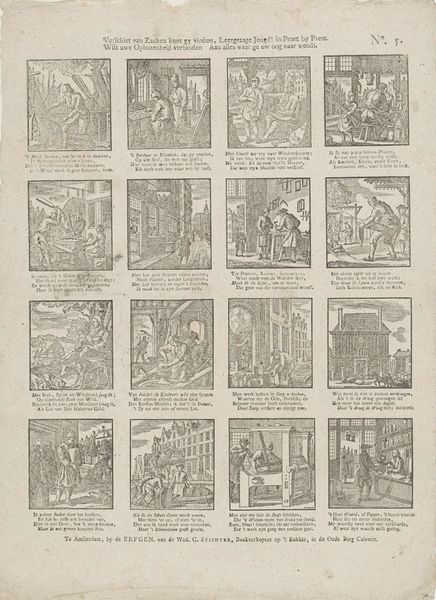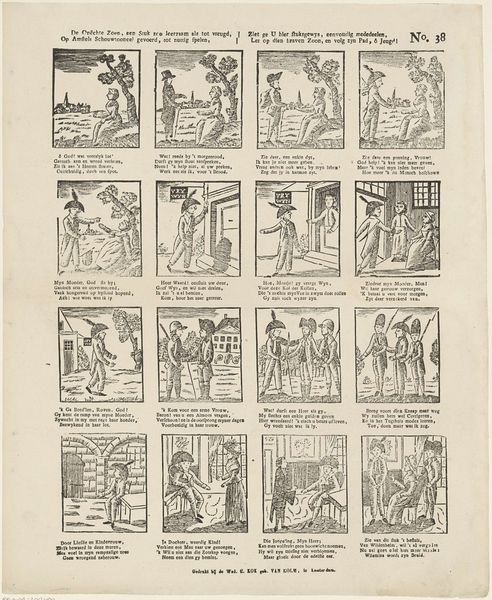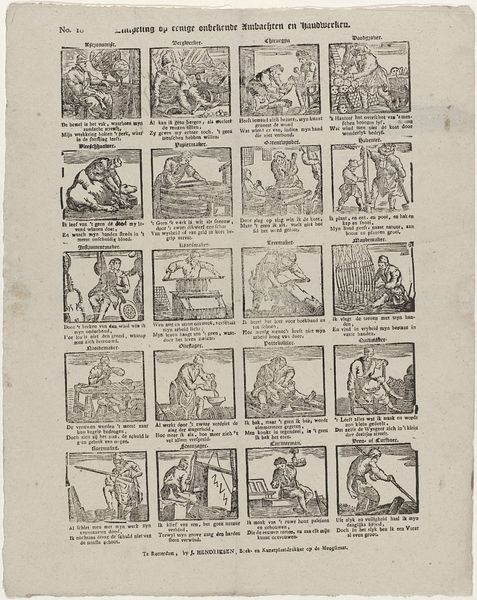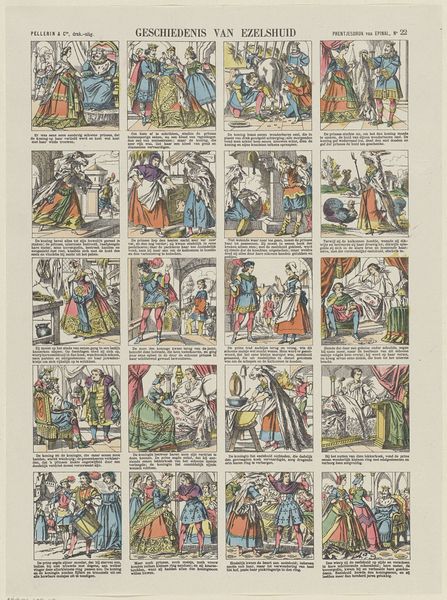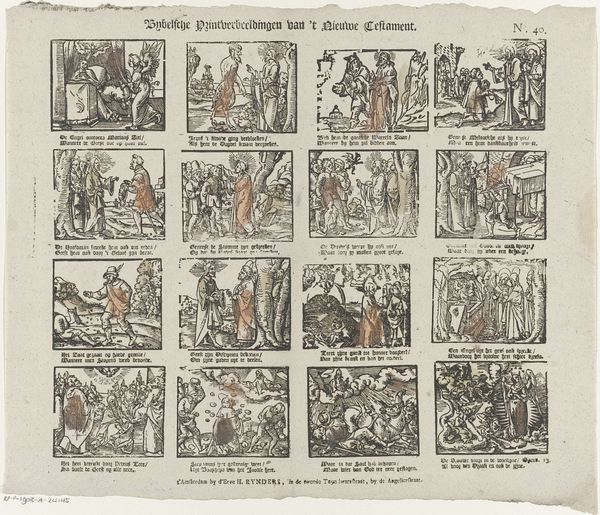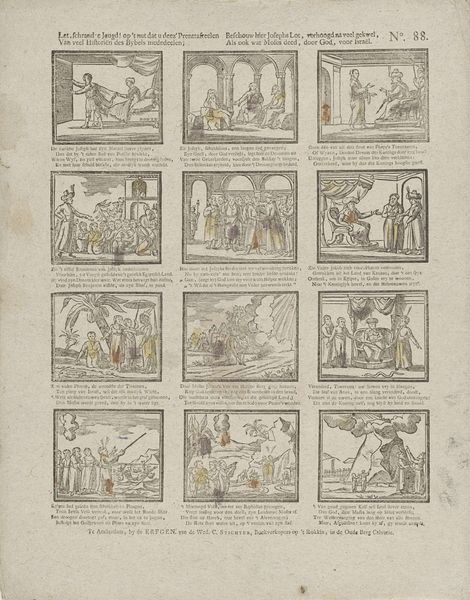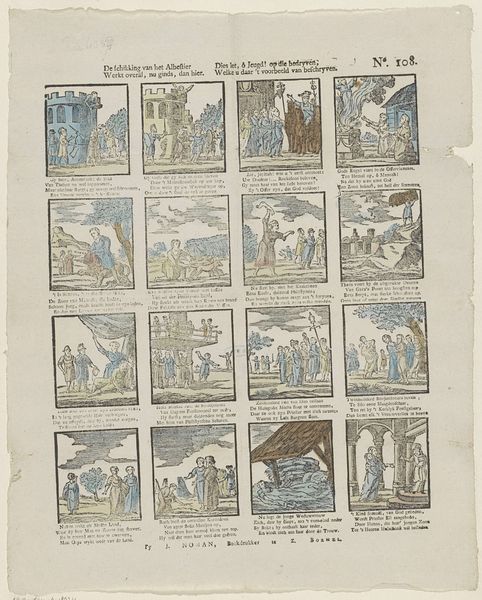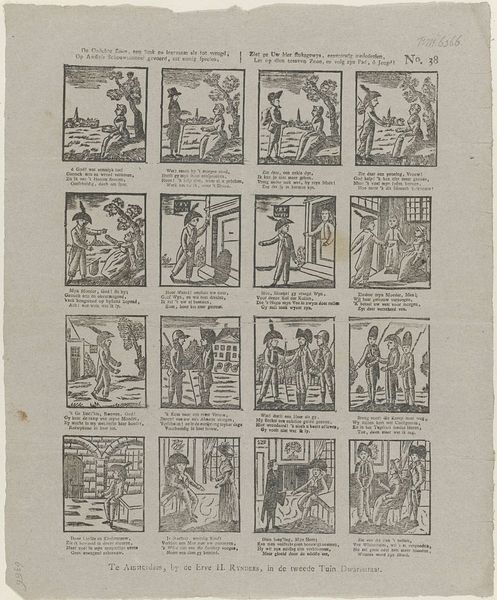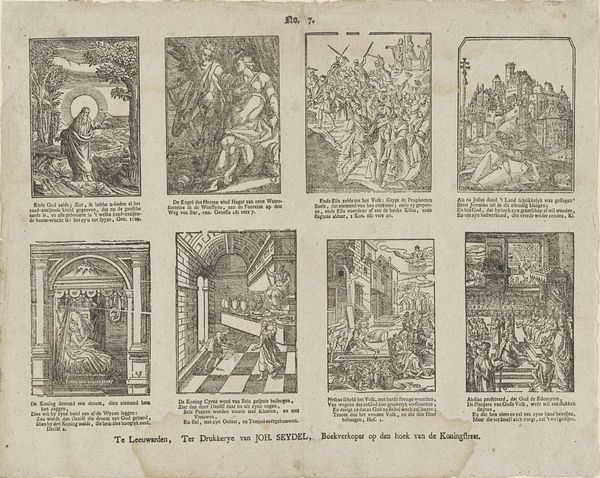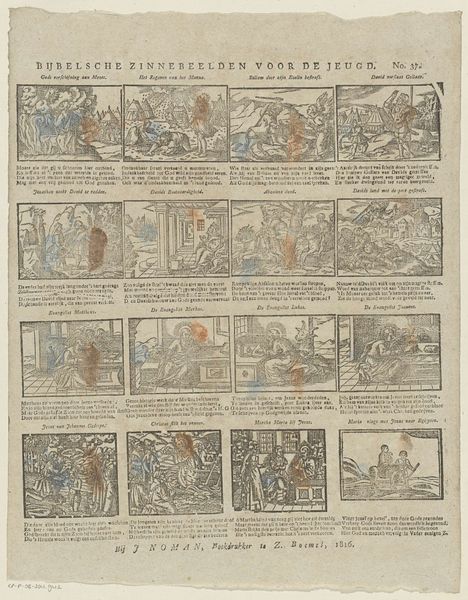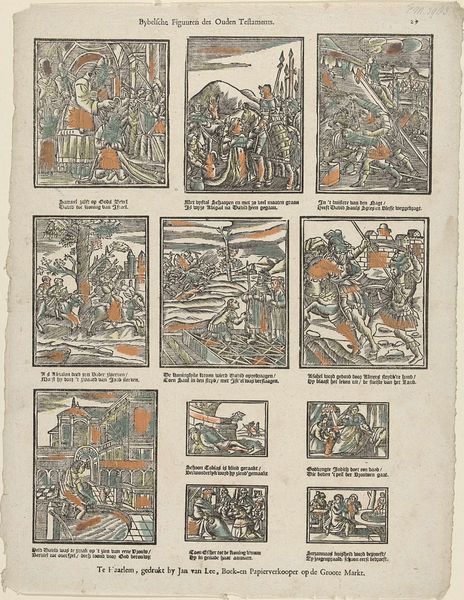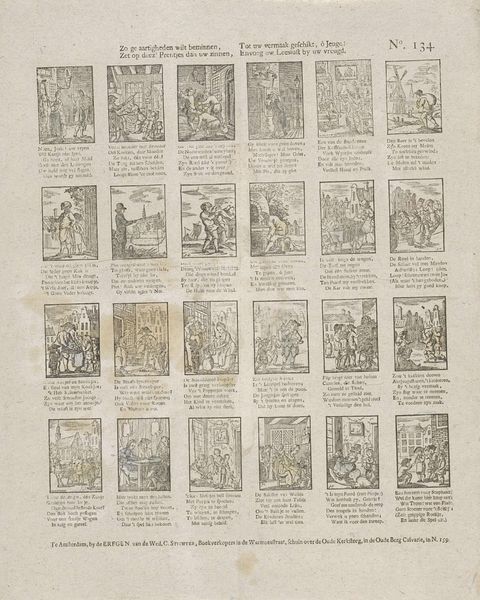
Evangelisten en apostelens verklaring / 's Heylands leeven / Johannes openbaring 1831 - 1854
0:00
0:00
print, engraving
#
narrative-art
# print
#
old engraving style
#
folk-art
#
engraving
Dimensions: height 310 mm, width 420 mm
Copyright: Rijks Museum: Open Domain
Curator: This intriguing print, dating from 1831 to 1854, is attributed to Christoffel van Sichem I, and it's entitled "Evangelisten en apostelens verklaring / 's Heylands leeven / Johannes openbaring." The Rijksmuseum holds this particular copy. It looks like an engraving, and depicts numerous scenes. Editor: My first thought is just how packed it is! A whole collection of tiny dramas playing out. It's got a kind of folksy, intense vibe, doesn't it? Like a medieval comic strip, but with heavier themes. Curator: Precisely. Consider the production: engraving involved a highly skilled artisan meticulously cutting lines into a metal plate, layering both the narrative and texture that defines the print, and subsequently meaning. It bridges "high art" with something more populist, destined for wider consumption. Editor: Absolutely, and that material aspect tells a story too. Imagine those hands working on the plate, the smell of the ink, the press...it lends itself to those interpretations about labor that you favor. Also, do you notice how the narrative of the pictures have so much texture to make up for color? Curator: Good point. With limited chromatic means, texture creates a certain type of affect in viewing the pieces, perhaps. Editor: And those tiny captions beneath each scene! They're almost as detailed as the images themselves, which, to me, gives off the quality that whoever produced these intended them to teach biblical narrative. A holy comic book for the masses, perhaps? Curator: The composition lends itself to serial, narrative storytelling and visual economy with material constraints, I agree. Considering the social context, we can think about literacy levels, religious fervor, and the distribution networks that allowed prints like these to circulate and convey religious ideology. Editor: Right. When you lay it out so, there’s definitely an intensity that connects each piece. Overall, I think it brings to the fore the fact that at its basest form, art like this, with all its themes of good and evil, is all about the emotional response evoked through technique and composition. Curator: A worthy point, the dialogue it invites about materiality and meaning is perhaps its lasting appeal.
Comments
No comments
Be the first to comment and join the conversation on the ultimate creative platform.
